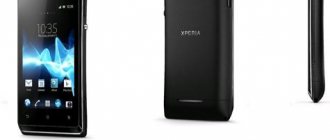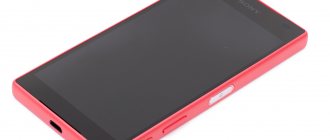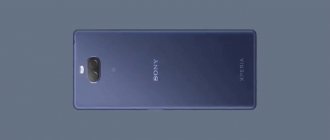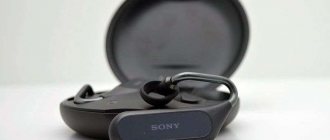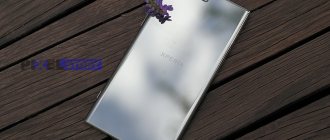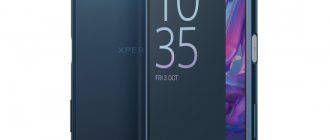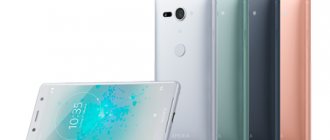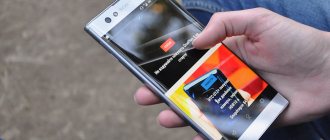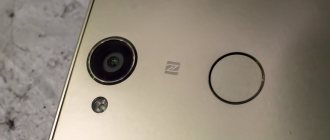It seems that Sony has adopted the manner of making two key announcements on smartphones per year from Samsung, which consistently shows the Galaxy S in the spring, and the larger Galaxy Note in the fall or closer to it. There is some logic to this. In the spring, Sony introduced a new Xperia X line, consisting of the inexpensive and compact Xperia XA, a mid-range smartphone called the Xperia X, and the top-end Xperia X Performance. In the fall, it was logical to expect the Xperia X Compact - but it came not alone, but with another flagship, directly competing with X Performance. The new product was named Xperia XZ – and, to be honest, it’s not easy to trace the logic of its release. But I'll try.
The Xperia XZ boasts a 5.2-inch display versus the Performance's 5-inch, a USB Type-C port instead of microUSB, a fresh design, and a camera with a new electronic stabilizer, an infrared sensor, and an improved autofocus system. This is where the differences, in general, end - both devices will be sold simultaneously, and at the same price: 49,990 / 50,990 rubles, depending on the version (with one/dual SIM cards and 32/64 GB of internal memory, respectively). As the hero of the famous animated series said, this is a turn.
Another funny moment, I already noted it in the preliminary review of the new product. Some time ago, we released news in which, among other things, we reported that the Sony Xperia Z family was leaving the scene, to which the Russian representative office of the company reacted harshly, justifying its position both by the fact that devices in this series are still on sale (a fact), and by the fact that that there was no official announcement of the cessation of development of the family. Well, we can consider the new product another answer - in its person, Sony Mobile continued both the X family and the Z line. Two birds with one stone - one smartphone.
⇡#Technical characteristics
| Sony Xperia XZ | Sony Xperia X Performance | Sony Xperia X | Huawei P9 | Samsung GALAXY S7 | |
| Display | 5.2 inches, IPS, 1920 × 1080 pixels, 424 ppi, capacitive multi-touch | 5 inches, IPS, 1920 × 1080 pixels, 441 ppi, capacitive multi-touch | 5 inches, IPS, 1920 × 1080 pixels, 441 ppi, capacitive multi-touch | 5.2 inches, IPS, 1920 × 1080 pixels, 424 ppi, capacitive multi-touch | 5.1 inches, AMOLED, 2560 × 1440 pixels, 575.9 ppi, capacitive multi-touch |
| Protective glass | Corning Gorilla Glass (modification not specified) | Yes, manufacturer unknown | yes, manufacturer unknown | Corning Gorilla Glass 4 | Corning Gorilla Glass (version not specified) on both sides |
| CPU | Qualcomm Snapdragon 820 (dual 2.2 GHz Kryo cores + dual 1.6 GHz Kryo cores) | Qualcomm Snapdragon 820 (dual 2.2 GHz Kryo cores + dual 1.6 GHz Kryo cores) | Qualcomm Snapdragon 650 (two ARM Cortex-A72 cores, 1.8 GHz + four ARM Cortex-A53 cores, 1.4 GHz) | Huawei Kirin 955 (four ARM Cortex-A57 cores, 2.5 GHz + four ARM Cortex-A53 cores, 1.8 GHz) | Exynos 8890 Octa (four ARM Cortex-A57 cores, 2.6 GHz + four ARM Cortex-A53 cores, 1.6 GHz) |
| Graphics controller | Adreno 530, 624 MHz | Adreno 530, 624 MHz | Adreno 510, 550 MHz | Mali-T880 MP4, 900 MHz | Mali-T880 MP12, 650 MHz |
| RAM | 3 GB | 3 GB | 3 GB | 3/4 GB | 4 GB |
| Flash memory | 32/64 GB | 32/64 GB | 32/64 GB | 32/64 GB | 32/64 GB |
| Memory card support | There is | There is | There is | There is | Yes, in the S7 Duos version there is a combined slot for a memory card and SIM card |
| Connectors | USB Type-C, 3.5 mm minijack | microUSB, 3.5 mm minijack | microUSB, 3.5 mm minijack | USB Type-C, 3.5 mm minijack | microUSB, 3.5 mm minijack |
| SIM cards | one nanoSIM/two nanoSIM | one nanoSIM/two nanoSIM | one nanoSIM/two nanoSIM | one nanoSIM/two nanoSIM | one nanoSIM/two nanoSIM |
| Cellular connection 2G | GSM 850 / 900 / 1800 / 1900 MHz | GSM 850 / 900 / 1800 / 1900 MHz | GSM 850 / 900 / 1800 / 1900 MHz | GSM 850 / 900 / 1800 / 1900 MHz | GSM 850 / 900 / 1800 / 1900 MHz |
| Cellular 3G | HSDPA 800/850/900/1700/1900/2100 MHz | HSDPA 800/850/900/1700/ 1900/2100 MHz | HSDPA 800/850/900/1700/ 1900/2100 MHz | HSDPA 800/850/900/1700/ 1800/1900/2100 | HSPA 850/900/1700/1900/2100 MHz |
| Cellular 4G | LTE Cat. 9 (up to 450 Mbit/s): bands 1, 2, 3, 4, 5, 7, 8, 12, 13, 17, 19, 20, 26, 28, 29, 32, 38, 39, 40, 41 | LTE Cat. 9 (up to 450 Mbit/s): bands 1, 2, 3, 4, 5, 7, 8, 12, 17, 19, 20, 26, 28, 38, 39, 40, 41 | LTE Cat. 6 (up to 300 Mbit/s): bands 1, 2, 3, 4, 5, 7, 8, 12, 17, 19, 20, 26, 28, 38, 39, 40, 41 | LTE Cat. 6 (up to 300 Mbit/s): bands 1, 2, 3, 4, 5, 6, 7, 8, 12, 17, 18, 19, 20, 26, 28, 38, 39, 40 | LTE Cat support. 12 (up to 600/50 Mbit/s): bands 1, 2, 3, 4, 5, 7, 12, 13, 20 |
| WiFi | 802.11a/b/g/n/ac | 802.11a/b/g/n/ac | 802.11a/b/g/n/ac | 802.11a/b/g/n/ac | 802.11a/b/g/n/ac |
| Bluetooth | 4.2 | 4.2 | 4.2 | 4.2 | 4.2 |
| NFC | There is | There is | There is | There is | There is |
| Navigation | GPS, A-GPS, GLONASS, BeiDou | GPS, A-GPS, GLONASS, BeiDou | GPS, A-GPS, GLONASS, BeiDou | GPS, A-GPS, GLONASS, BeiDou | GPS, A-GPS, GLONASS, BeiDou |
| Sensors | Illumination, proximity, accelerometer/gyroscope, magnetometer (digital compass), barometer, color spectrum sensor | Illumination, proximity, accelerometer/gyroscope, magnetometer (digital compass), barometer | Illumination, proximity, accelerometer/gyroscope/pedometer, magnetometer (digital compass), barometer | Illumination, proximity, accelerometer/gyroscope, magnetometer (digital compass) | Illumination, proximity, accelerometer/gyroscope, magnetometer (digital compass), barometer, heart rate |
| Fingerprint's scanner | There is | There is | There is | There is | There is |
| Main camera | 23 MP, ƒ/2.0, hybrid autofocus, LED flash, 4K video recording | 23 MP, ƒ/2.0, hybrid autofocus, LED flash, Full HD video recording | 23 MP, ƒ/2.0, hybrid autofocus, LED flash, Full HD video recording | Leica, dual module, 12 megapixels, f/2.2, phase detection autofocus, LED flash, 4K video recording | 12 MP, ƒ/1.7, phase detection autofocus, LED flash, optical stabilization, 4K video recording |
| Front-camera | 13 MP, fixed focus | 13 MP, fixed focus | 13 MP, fixed focus | 8 MP, fixed focus | 5 MP, fixed focus |
| Nutrition | Non-removable 11 Wh battery (2900 mAh, 3.8 V) | Non-removable 10.26 Wh battery (2700 mAh, 3.8 V) | Non-removable battery 9.96 Wh (2620 mAh, 3.8 V) | Non-removable 11.4 Wh battery (3000 mAh, 3.8 V) | Non-removable 11.4 Wh battery (3000 mAh, 3.8 V) |
| Size | 146 × 72 × 8.1 mm | 143.7 × 70.4 × 8.7 mm | 142.7 × 69.2 × 7.9 mm | 145 × 70.9 × 7 mm | 142.4 × 69.6 × 7.9 mm |
| Weight | 161 grams | 164 grams | 153 grams | 144 grams | 152 grams |
| Housing protection | IP68, up to half an hour at a depth of up to 1.5 m | IP68, up to half an hour at a depth of up to 1.5 m | No | No | IP68, up to half an hour at a depth of up to 1.5 m |
| operating system | Android 6.0 Marshmallow, Sony Xperia shell | Android 6.0 Marshmallow, Sony Xperia shell | Android 6.0 Marshmallow, Sony Xperia shell | Android 6.0 Marshmallow, own EMUI 4.1 shell | Android 6.0 Marshmallow, Samsung's own TouchWiz shell |
| Current price | 49,990 / 50,990 rubles | 49,990 / 50,990 rubles | 39,990 rubles | Approximately 50,000 rubles | from 49,990 rubles |
| Sony Xperia XZ – information about the hardware according to the CPU Z application | ||||
Review of Sony Xperia XZ. Japanese flagship for half a year
The life cycle of a modern smartphone on an assembly line is already short, and Sony decided to shorten it even further. Now the company releases new flagships every six months, and it cannot be said that they are very significantly different from their predecessors. The Xperia XZ was tested ahead of the release of the new flagship. OBZOR.one has just started its work, so it was simply not possible to test it earlier, but you can’t miss such an interesting gadget. So, the smartphone received a 5.2-inch FullHD display, 3 GB of RAM and 64 GB of ROM, a powerful Qualcomm Snapdragon 820 SoC, 23 and 13 MP cameras, as well as an IP65/68 protected case. What else? Read on.
Specifications
| Display size and type | 5.2 inches, 1920x1080 pixels, IPS, capacitive multi-touch |
| CPU | Qualcomm Snapdragon 820, 4 cores (2x2.15 GHz + 2x1.6 GHz) |
| Graphics accelerator | Adreno 530 |
| Built-in memory, GB | 64 |
| RAM, GB | 3 |
| Memory expansion | microSD (up to 256 GB) |
| Number of SIM cards | 2 |
| 2G communication standards | 850, 900, 1800, 1900 MHz |
| 3G communication standards | 800, 850, 900, 1700, 1900, 2100 MHz |
| 4G communication standards | 700, 800, 850, 900, 1700, 1800, 1900, 2100, 2300, 2500, 2600 MHz |
| WiFi | Wi-Fi802.11b/g/n/ac, 2.4/5 GHz |
| Bluetooth | 4.2 BLE |
| NFC | Eat |
| IrDA | No |
| USB connector | USB Type-C |
| 3.5 mm jack | Eat |
| FM radio | No |
| Fingerprint's scanner | Eat |
| Navigation | GPS/A-GPS, GLONASS, BeiDou |
| Built-in sensors | Accelerometer, proximity sensor, Hall sensor, magnetometer, light sensor, fingerprint scanner |
| Main camera | 23 MP, Exmor RS 1/2.3” matrix, f/2.0 |
| Front-camera | 13 MP, Exmor RS 1/3.06” matrix, f/2.0 |
| operating system | AndroidTM 6.0 (upgrade to Android 7.0) |
| Protection class | IP65/IP68 |
| Battery | 2900 mAh |
| Dimensions, mm | 146 x 72 x 8.1 |
| Weight, g | 161 |
Appearance and ease of use
The design of Sony smartphones has always been recognizable and stood out against the background of hundreds of monotonous devices that can only be identified without a logo by looking closely. At the same time, the design of Xperia smartphones is constantly progressing. The current one is called Loop Surface, which can literally be translated as “loop surface.” It sounds quite funny, especially considering the sharp angles when viewed from above. But the left and right side surfaces are rounded, and symmetrically. The upper and lower edges are also absolutely the same shape and differ only in the functional elements installed on them. The smartphone is protected according to the IP65/68 standard, so it is not only not afraid of dust and splashes, but can also dive to a depth of one and a half meters without consequences.
The front side is completely covered with Gorilla glass (the generation is not specified, but most likely it is Gorilla Glass 4) with a 2.5D effect, thanks to which the display seems to flow into the rounded sides. The back panel is made of ALKALEIDO aluminum alloy. The name ALKALEIDO itself consists of the words aluminum and kaleidoscope. Sony developed this alloy together with a company with a hundred-year history, Kobe Steel, which specializes in ferrous metallurgy, as well as copper and aluminum products. The main goal of the alloy developers was to create a surface that would look good when viewed from any angle. The surface of the lid really looks great, and the coating is scratch-resistant, but there is no “wow” effect. Fingerprints on dark color options are too noticeable, so you have to wipe the back panel quite often, but the display, thanks to the oleophobic coating, on the contrary, rarely.
There are a pair of speakers on the front side at the top and bottom of the display. The top part also houses proximity/light sensors, a front camera and an LED indicator. There is also an NFC area.
On the back side you can see the flash, a block of auxiliary camera sensors, as well as the rear camera itself.
On the left side surface there is only a SIM card tray, one of which can be replaced with a microSD memory card. When the tray is removed, the smartphone reboots. Apparently this is a protection algorithm.
All physical keys are installed on the right side surface. Namely, a rocker key for controlling the volume level, a physical photo key, which is so often missing in most modern smartphones, as well as a power key combined with a fingerprint scanner. The scanner has no additional functions.
After using the smartphone for a week, I got the impression that the manufacturer wanted to please both right-handers and left-handers. And he partially succeeded. When operating the phone with your left hand, the power key fits neatly under the index finger, the volume keys under the middle and ring fingers, and the photo key in portrait mode fits well under the little finger. In this case, accidental clicks are practically excluded. After the personal Xiaomi Mi5, the tested smartphone was simply a godsend in terms of convenience for left-handed people. But right-handed people have to press all the keys with their thumb. And if the power key is extremely convenient, then the volume keys are more difficult, and the shutter key in portrait mode is completely inaccessible for right-handed people. But in landscape mode, the location of the shooting key is the same as in most compact cameras, and this is convenient and familiar.
On the upper side surface there is a mini-jack 3.5 audio jack and a microphone. A second microphone and a USB Type-C connector are installed on the bottom edge.
Display
The smartphone uses a 5.2-inch IPS matrix with FullHD resolution. A matrix with a 4K resolution was not used, apparently in order to save, not the budget, but the battery charge, because high-resolution displays are quite power-hungry. At the same time, there is no particular need for such a high resolution with screen diagonals of 5-5.5 inches. Of course, the display has a polarizing filter, an oleophobic coating, a touch layer with support for up to 10 simultaneous touches, and the display itself is made using OGS technology, that is, without an air gap.
The display settings provide three operating modes - standard, X-Reality for mobile and maximum brightness mode, but these modes only work in pre-installed photo and video viewing applications. At maximum backlight brightness, the luminosity of the white field was 551.47 cd/sq.m, and the luminosity of the black field was 0.45 cd/sq.m, which gives a final static contrast of 1225:1.
Automatic backlight brightness control works correctly and, from a subjective point of view, the operating algorithm is extremely successful. When there is a sharp change in the illumination level from 400 to 1 lux (for example, when turning off the lights in a dark room), the brightness of the backlight does not drop to the minimum sharply, but smoothly, or rather very smoothly - about 80 seconds. During this time, the eyes have time to get used to the darkness, as a result of which the image with low backlight brightness does not seem dim. When you turn on a powerful light source, the backlight brightness level increases to maximum in just a couple of moments. To save battery power, you can activate the activity detection function, which automatically turns off the screen when the user is not using the smartphone. Another feature worth noting is the glove control mode.
The colors on the display are not very accurate, and the color temperature is too high, but it is possible to adjust with three sliders (RGB). The color gamut is huge and close to AdobeRGB. Below are the measurement results in the default display mode.
This slideshow requires JavaScript.
Sound
In addition to its main function, the earpiece also serves as a second system speaker, which allows you to reproduce stereo sound. The speakers sound good. The sound is clear, detailed with a noticeable high-frequency range and noticeable bass. But the volume is not enough. For example, a personal Xiaomi Mi5 is much louder, even if it sounds like it was covered with an iron bowl. When you connect headphones or a headset, you can activate automatic sound optimization and noise reduction modes (when using headphones with this function), and you can also control the microphone sensitivity. There is also a dynamic normalizer, ClearAudio+ and DSEE HX function, which, according to the manufacturer, restores high frequencies when listening to compressed formats (works only with wired headphones). The list of special effects includes a 5-band equalizer with the ClearBass function (hello from the Walkman), various surround sound modes and a realistic surround sound function.
Despite this abundance of various sound enhancement functions, the tested Sony Xperia XZ does not have a separate audiophile DAC and amplifier. Although this is what you would expect from the creators of the Walkman, which once served as a household name for any pocket player, in a flagship smartphone. However, sound reproduction is excellent by smartphone standards. When testing the quality of audio output in the Right Mark Audio Analyzer 6 package using an external E-MU 0204 USB sound card, the final rating was “excellent”. Smooth frequency response and high signal-to-noise ratio.
General results
| Frequency response unevenness (in the range 40 Hz – 15 kHz), dB | +0.01, -0.08 | Great |
| Noise level, dB (A) | -107.4 | Great |
| Dynamic range, dB (A) | 105.7 | Great |
| Harmonic distortion, % | 0.0056 | Very good |
| Harmonic distortion + noise, dB(A) | -81.6 | Fine |
| Intermodulation distortion + noise, % | 0.0042 | Great |
| Interpenetration of channels, dB | -105.4 | Great |
| Intermodulation at 10 kHz, % | 0.0027 | Great |
| Overall rating | Great |
Frequency response
| Left | Right | |
| 20 Hz to 20 kHz, dB | -0.20, +0.01 | -0.30, -0.19 |
| 40 Hz to 15 kHz, dB | -0.08, +0.01 | -0.25, -0.19 |
Will it rock or not? An age-old question for lovers of mobile music and headphones with higher impedance. The norm for smartphones can be considered 150-250 mV. Voltage measurements when applying a sinusoidal signal with a frequency of 1 kHz and operating into a 32 Ohm load showed a result of 275 mV. For comparison, the personal Xiaomi Mi5 produced 197.1 mV under the same conditions, and the recently described Huawei GR5 2020 (aka Huawei Mate 9 Lite and Honor 6x) – 175.7 mV.
Performance
The Sony Xperia XZ smartphone, like most flagships of 2020 and early 2020, is equipped with a Qualcomm Snapdragon 820 SoC (MSM8996). This is a 4-core solution made using a 14 nm process technology based on the Kryo architecture. A couple of cores operate at 2.15 GHz, and two more at 1.7 GHz. The graphics part is handled by Adreno 530, operating at 624 MHz. LPDDR4 memory operates at 1866 MHz. The RAM capacity of 3 GB is not impressive, but sufficient for any task. The ROM capacity of the tested smartphone is 64 GB. A modification with 32 GB of onboard memory is also available.
This slideshow requires JavaScript.
System performance was measured in synthetic PCMark, 3DMark, Geekbanch 4 and AnTuTu v6.2.7. Memory speed was assessed using the AndroBench application
Testing was also carried out in cross-platform javascript tests (Mozilla Kraken JavaScript and SunSpider). The results of these tests significantly depend on the browser used, therefore, to minimize the impact, Google Chrome will be used in all reviews, as the most common one.
Even the most demanding smartphone games of 2020 are not a problem. We set the maximum quality settings, and go ahead for the orders. At the same time, even after an hour of play, no problems with significant overheating or throttling were noticed.
Camera
Sony is quite successfully promoting its mirrorless cameras, and in general the manufacturer has plenty of experience in the field of photo and video equipment. Moreover, Sony is the main supplier of camera sensors for most smartphones. Of course, Sony matrices are also installed in the main competitors. But if competitors, having realized the absurdity of the resolution war, order 12-16 MP matrices from Sony, then Sony for its flagship uses an exclusive IMX300 Exmor RS sensor with a resolution of 23 MP and a physical size of 1/2.3”. Moreover, instead of optical stabilization, there is only 5-axis electronic stabilization, and the aperture is f/2.0. In comparison, the Samsung GALAXY S7 has a 12MP Sony IMX260 Exmor RS sensor and an f/1.7 lens aperture, which helps capture better shots in low light. In general, the manufacturer clearly got carried away here, because processing a photo with a resolution of 23 MP is much more difficult than 12 MP, and the processing flaws are much more noticeable.
As for autofocus performance, the camera has many trump cards. Predictive autofocus, phase sensors built into the matrix, and a laser rangefinder. Focusing is incredibly fast and often very accurate. And if when shooting distant objects this is not surprising, because a small sensor has a large depth of field, then at short distances a laser rangefinder is a great help. In addition, there is a built-in infrared sensor that helps detect colors more accurately. In general, the range of various additional camera modules is impressive.
The front camera also has a relatively high resolution - 13 MP, but only with conventional contrast autofocus without any additional functions.
This slideshow requires JavaScript.
The standard photography control program provides a so-called “super automatic” as well as a manual mode. To change the settings yourself, the following parameters are available: autofocus operating mode, white balance, exposure compensation, shutter speed, sensitivity (ISO 50-3200) and resolution. It is also possible to activate HDR modes, smile detection self-timer and subject tracking. The latter works almost flawlessly. Even in advanced DSLRs and mirrorless cameras, such accuracy of autofocus tracking is rare. However, here again the large depth of field has an effect, which greatly facilitates the work of the focusing unit. But still, among its competitors, the Sony Xperia XZ has clearly the best tracking autofocus. The smartphone is capable of transferring full control to a third-party program. But, unfortunately, even in third-party programs it is not possible to shoot in RAW format. To evaluate image quality, a test pattern was captured with all available sensitivity values. Below are cropped fragments.
Sample pictures
Macro photography
Shooting in low light
| Illumination 50 lux | Illumination 50 lux + flash | Illumination 3 lux + flash |
Front-camera
Video shooting
In video mode, recording FullHD videos is possible in 30p and 60p modes, which is pleasantly pleasing. However, in 1080/60p mode, scene program selection is not possible. The 4K video recording mode is hidden in the list of additional functions, which is a little inconvenient. In the settings you can select white balance settings and introduce exposure compensation. In addition, when recording 4K videos, you can select a codec – H.264 or H.265. The data flow when recording video with 4K resolution and using the H.265 codec is 35 Mbit/s, but using the H.264 codec leads to an almost twofold increase in the bitrate (up to 56.1 Mbit/s) with comparable picture quality. The bitrate of a FullHD video in 60p format is 30 Mbit/s, and at 30 frames per second – 19.4 Mbit/s.
4K/25p H.265 recording example
Battery and battery life
The smartphone uses a battery with a capacity of 2900 mAh. Not too much. Of course, the Xperia XZ has Stamina and Ultra Stamina modes, which partially disable the functions of the smartphone, but this does not make it much easier. In reading mode, the device lasted only 12 hours and 20 minutes. In game mode – 4 hours 20 minutes. When playing a FullHD video in MX Player at a backlight brightness of 200 cd/sq.m, the smartphone lasted 11 hours and 18 minutes, which is already quite good. In addition to various modes of economical battery consumption, the smartphone software also worries about the safety of the energy source. The battery saving function detects when the phone is usually disconnected from the charger and calculates the charging pattern for this time. Thus, up to 90% of the battery’s capacity is replenished in normal mode, and charging of the last 10% is completed by a certain time when charging stops. In theory, this feature can double the battery life. In general, it’s convenient, but I would like to be able to manually specify the charging end time.
Conclusion
Sony has made a great smartphone. The beautiful and recognizable design may be controversial, but it has fans. In addition, the Xperia XZ is equipped with a pair of high-quality stereo speakers, it has excellent sound on the analog audio output, and the output signal level is enough to drive headphones with medium impedance. The tested smartphone has a bright and very contrasting display, and the color gamut is close to AdobeRGB. Of course, the color temperature is traditionally too high for Sony, but thanks to the ability to adjust color using RGB channels, color rendition can be adjusted manually. There is enough performance in any situation and for any application. And all this stuff is placed in a case protected according to IP65/68 class. Among the shortcomings, it is worth noting only the short battery life in reading mode, and also, with a stretch, the hybrid tray can be considered a disadvantage if 64 GB of internal memory is not enough for you.
But competitors have all this, and some are even better. It won’t be possible to travel with protection from dust and moisture, because this is no longer an exclusive feature of Sony. Yes, and with the built-in camera there is still something to work on. In general, we will wait for Sony's new products at MWC 2020 and compare them with the current flagship. Sony must at least surprise, otherwise it will be difficult to overcome the barrier of 1% of global smartphone sales. In addition, 2020 is a landmark year for Sony’s mobile division, and if the division does not begin to make a profit, then the fate of the Sony VAIO division awaits it.
UPD: On February 28, 2020, in Barcelona at MWC 2020, two successors of the XZ were presented at once - the slightly updated XZs and the XZ Premium with a 4K HDR screen and a Snapdragon 835 processor. The XZ Premium was officially recognized as the best smartphone of MWC 2020, displacing other high-profile new products represented by LG G6 and Huawei P10
If you find an error, please select a piece of text and press Ctrl+Enter.
- Click here to share content on Facebook. (Opens in a new window)
- Click to share on Twitter (Opens in new window)
- Click to share on Telegram (Opens in new window)
- Click to share on Reddit (Opens in new window)
- Click to share posts on Pocket (Opens in new window)
- Click to share on Skype (Opens in new window)
- Click to print (Opens in new window)
⇡#Appearance, ergonomics and software
Sony Xperia XZ in hand
Sony does not betray itself, continuing to produce smartphones that are recognizable at first glance with its own corporate style - this is exactly what the company is loved and appreciated for. The rectangle with a large power button on the right side and slightly convex edges has not gone away. But the Xperia XZ features the new Loop Surface style introduced for this model and the little X Compact.
Sony Xperia XZ, front panel: in addition to the screen, there are two speakers (spoke and main), front camera, light sensor and status indicator (in the upper left corner)
Among the differences from other Xperia X, the most striking are the completely flat ends (top and bottom), sharp corners, a different design of the rear panel and general symmetry, which is expressed, for example, in the same bend of the edges of both the front panel and the back - the XZ looks more technologically, or something. This is a beautiful thing with a clear provenance and breed - just what you expect from a top-end Sony device.
Sony Xperia XZ, rear panel: in the upper left corner is the camera, below it is an LED flash, an IR sensor and a laser focus illuminator unit
Like other devices from the Xperia X family, the new product does not have inserts made of a material of a different color. The back and ends are made of matte metal, which hardly gets dirty (prints even on the black version are barely noticeable); the front panel is entirely covered with tempered Gorilla Glass (version unknown). Both speakers - both the conversational one and the main one - are output to it, as usual, which is why the call, if you put the smartphone flat, will be muffled. The volume, however, is sufficient.
Sony Xperia XZ, bottom edge: USB Type-C connector and microphone
Sony Xperia XZ, top edge: 3.5mm headphone/headphone jack and second microphone
The USB Type-C port is located, naturally, at the bottom, the mini-jack for headphones (such an outdated connector, if you still remember it) is at the top. There is a dedicated key to activate the camera and release the shutter. Slots for SIM cards and memory cards are located under a cover on the left side. Everything, in general, is arranged here in the same way as we are used to seeing in Xperia smartphones.
Sony Xperia XZ, left side: slot for nano-SIM cards and/or microSD memory card
Sony Xperia XZ, right side: power button with built-in fingerprint scanner, volume key, camera activation and shutter release button
Sony Xperia XZ is water- and dust-proof according to the IP68 standard: this means that it can be kept at a depth of up to one and a half meters for half an hour - and nothing will happen to it. With the release of the waterproof iPhone 7, this simply becomes a standard for all older models, although Sony began making rugged phones on a global scale almost before anyone else.
The colors are silver, black and “night sky”, that is, dark blue. We ended up with the device in exactly this color – and it’s really good.
The XZ has a thinner body than the Performance (8.1 mm versus 8.7 mm), but the large bezels around the larger display prevent us from talking about the same comfort of use. Unfortunately, it is extremely difficult to handle the new product with one hand. The width of the frames could be attributed to the protected design, but Samsung, let us remind you, the S7 edge or Note 7 with a screen that crawls onto the sides are also protected.
The fingerprint scanner, as usual, is built into the side button. It works quickly, the percentage of unsuccessful identification attempts is low - as long as the fingers are intact. If you get a scratch, you will have to record the fingerprint again. This is inevitable for capacitive sensors. With Sony, due to the small scanner area, this will have to be done more often. The scanner works exclusively with the device locked; no additional functions - in the manner of, for example, Huawei - can be attached to it.
Operating system – Android 6.0 Marshmallow with the imminent prospect of updating to Android 7.0 Nougat. The shell is also familiar – Xperia UI. There are minimal differences from the version we talked about in the Xperia X or X Performance reviews. A color scheme that matches the style of the case, unobtrusive proprietary software (basic applications, Lifelog, a successful energy-saving STAMINA mode), a separate application screen, a well-known style. To be honest, in comparison with the shells of Huawei or Samsung, it looks a little outdated, but it has its advantages - first of all, the minimal intrusiveness of branded elements and the high-quality execution of those that exist. However, this is a matter of taste in any case. The Xperia shell works quickly, without glitches. But it is very gluttonous, although Sony boasts of optimization. Yes, there is a Snapdragon 820 platform, a 5.2-inch display and a battery of only 11 Wh - but the smartphone eats up to 25% of the charge per hour of use, which is still too much. However, more about this in the corresponding section.
A signature feature is tips on using a smartphone. At the presentation of the Xperia XZ, we were told a lot about how it will adapt to the user, guessing his desires and understanding what is happening around him. In fact, only the Google Now service works in this regard; I did not see any special movements from the Xperia shell. Yes, there are the mentioned tips, they are activated when you first enter a particular basic application - but nothing more. This point will probably be expanded in the future.
First impressions of the Sony Xperia XZ1
Initially, after the Xperia XZ1 renders were leaked, I was skeptical about this device, to put it mildly.
Thoughts were swarming in my head - “Loop Surface is cool, but how much can you exploit old ideas!”, “Where is the frameless design?!”, “Why such huge frames?”, and the question “Why pay for the Xperia XZ1 if there are XPeria XZs with such same camera, but noticeably cheaper (at least on the gray market).”
Most of these internal exclamations evaporated as soon as I picked up the Xperia XZ1. It only took a couple of moments to understand that this is a different phone that skillfully masquerades as previous Sony Xperia flagships.
Design. Perfect Loop Surface
At first, it was difficult to understand how Sony's designers managed to improve the already polished Loop Surface concept so much. Apparently, the slogan “there is no limit to perfection” best suits Sony Xperia smartphones. Without radically changing the design, they manage to show increasingly cool, technologically advanced products. It is worthy of respect.
From a design point of view, the Xperia XZ1 is a shining example of the Japanese company's engineering. Like a pre-war Japanese katana, it is sharpened and polished.
The flagship Sony Xperia is no longer an iPhone in the Android world, but a Porsche in the automotive world. Amazing continuity and persistent adherence to one’s ideals.
The Xperia XZ1's body is made from a single piece of aluminum. The lower and upper ends are covered with plastic. The workmanship was reminiscent of premium Walkman music players, everything is so cool.
I was very surprised by the antennas, there are already four of them and they are built in with an elegance that is inaccessible to most manufacturers. This solution is not only for beauty, to show the skill of Sony Mobile engineers, but also for a practical purpose - using 4 antennas to catch LTE Advanced and Gigabit Internet along with it. Megafon in Moscow already has such miracles.
The power button, combined with a fingerprint scanner, has finally begun to be painted in the color of the body. On black it became completely invisible.
Dimensions and ergonomics are better than those of the Xperia XZ or XZs. Largely thanks to the smoother ends, as well as the smaller thickness of the case - it was 8.1, now 7.4 mm.
Comparison of Xperia XZ1 and LG G6:
Comparison of Xperia XZ1 and Xperia X:
Comparison of Xperia XZ1 and Huawei Nova 2 Plus:
Different colors of Xperia XZ1:
Screen. Solid
High-quality IPS screen with FHD resolution and HDR support. The manufacturer claims brightness at 600 nits.
The viewing angles are maximum, the black color is good, the contrast is also at the level of top competitors. You can choose color profiles, like the Xperia XZ Premium.
In general, it’s a solid and pleasing screen with a traditional 16:9 aspect ratio and medium resolution.
Camera. Motion Eye
The Xperia XZ1 has Sony's top-end camera installed - an IMX400 sensor called Motion Eye, a bunch of sensors, tracking autofocus and super-slow motion 960 fps.
The same camera is found in the Xperia XZ Premium and Xperia XZ1 Compact, which I’ll talk about in the next review.
You can read a review of this camera here:
Sony Xperia XZ Premium camera review
If you can't get enough of the Xperia XZ Premium camera review, I advise you to also look at the comparison of the Xperia XZ1, LG G6 and Xperia X cameras that I did at IFA 2020:
Camera comparison between Xperia XZ1, Xperia X and LG G6
⇡#Display and sound
Sony, having once pressed the gas pedal to the floor with the 4K display of the Xperia Z5 Premium, quickly calmed down and has since consistently avoided even Quad HD displays. As unnecessary - the pixel density on screens with a diagonal of about five inches is more than enough. In this case, for example, a 5.2-inch LCD display (matrix - IPS) with a pixel density of 424 ppi is used. This is quite enough to not notice any signs of pixelation, even when holding the smartphone close to your eyes (but why?), and at the same time, the relatively low resolution allows you to save battery. In theory. In fact, here with the Xperia XZ everything is not so smooth, but I already touched on this a little higher and will continue later. Let's talk about the screen here.
| Sony Xperia X display settings | ||||
All the elements necessary for a modern smartphone are here: a polarizing filter, an oleophobic coating, a touch layer with support for ten simultaneous touches. There is also an ambient light sensor that allows the smartphone to set adequate brightness itself. The device does not cope with this task very well, for my taste, often causing the screen to shine too much. We are used to the fact that it is comfortable to use any smartphone in the dark when using adaptive backlighting - but this does not apply to the Xperia XZ. You have to manually lower the screen brightness.
The maximum brightness is very high – 629 cd/m2. Minimum – 43 cd/m2. In the sun you can see anything on the XZ screen without any problems, even the colors do not fade. By the way, the smartphone can independently determine when you are using it (the screen is on) or removed (the backlight goes off). It does this quite successfully; the corresponding item should be activated in the settings.
The contrast is also quite good - 1428:1. The minimum luminosity of the black field is 0.46 cd/m2. This is noticeably better than, for example, X Performance, and generally an excellent indicator for IPS. When looking at the screen at an angle, the image remains easy to read, but the contrast drops.
Sony Xperia XZ, gamma. Yellow line – Xperia XZ performance, dotted line – reference gamma
But the color settings and white balance of the Sony Xperia XZ display do not shine at all. And neither in X-Reality mode, nor in normal mode - the color picture is greatly distorted in both, as is the color temperature. This time we did not present the results of measurements in both modes - there is no fundamental difference between them. By default, X-Reality is set, you don’t have to turn it off. Unfortunately, the screen very actively adjusts the image to the situation; non-switchable brightness and color adjustment works depending not on external lighting, but on the specific image on the screen, so the measurement results should be considered very conditional.
Sony Xperia XZ, color temperature in standard mode. Blue line – Xperia XZ performance, dotted line – reference temperature
The color temperature fluctuates around 9000 K. Gamma is 2.15, the average deviation DeltaE for the extended Color Checker palette (grayscale + a wide range of color shades) is 5.79. The last two numbers aren't anything terrible, but due to the raised color temperature - and Sony raises it year after year - colors look unnatural, much cooler than they should be.
Sony Xperia XZ, color gamut. Gray triangle – sRGB coverage, white triangle – Xperia XZ coverage
The color gamut also does not correspond to the sRGB standard - it is rather closer to Adobe RGB. However, these are the features of the Sony Xperia that it’s time to get used to. In this case, you can at least be glad that the display is really bright and contrasty.
In terms of sound, the Sony Xperia XZ is good. If we talk about uncompressed audio files (FLAC or other Hi-Res formats), then here the smartphone is more on par with its competitors, even if it cannot compete with audiophile players. But with MP3 files, the XZ can pleasantly surprise due to the DSEE HX technology, which slightly “pumps up” them - although a serious effect can not always be heard. The LDAC protocol is supported for data transmission via Bluetooth - I would not say that it makes a significant difference from “regular” Bluetooth, but when using compatible headphones, the sound quality is still better. In general, the Xperia XZ copes very well with the duties of an audio player - it is one of the best smartphones in this regard, like its brothers in the Xperia Z5 or X line.
Sound
I don't like to make a separate point about sound, but in the case of the Xperia XZ it is necessary because it is incredible. Sony didn't skimp on stereo speakers, and it's noticeable, especially if you're upgrading from a standard cheap smartphone to a flagship.
Not only is the sound itself quite loud, but it has a generally wide volume coverage, frequency range and lack of hoarseness even at maximum volume. At the same time, I'm talking about the sound from the speakers. Even their location - the grilles are on the back side - is good, because they can only be covered on purpose.
As for the sound quality in the headphones, it is also excellent.
During a conversation, both the interlocutor and you can be clearly heard, even if the user is on the street or in a very noisy room.
⇡#Hardware and performance
The Sony Xperia XZ uses the same system-on-chip as the Xperia X Performance - Qualcomm Snapdragon 820 (MSM8996). Not even an updated version, 821, but exactly the same as before. However, there is certainly nothing to complain about here - this is one of the best platforms of 2020, which provides more than sufficient performance for a smartphone. Devices such as HTC 10, OnePlus 3, LG G5, Xiaomi Mi5 and so on are built on this SoC. Even Samsung uses the Snapdragon 820 in the Galaxy S7 in some markets, although only modifications with Exynos 8990 processors are supplied to Russia.
Let me briefly recall its architecture: four proprietary Kryo cores, two of which in this case operate at a clock frequency of 1.6 GHz, while the other two operate at a frequency of 2.15 GHz. The graphics are handled by the Adreno 530 graphics processor with a clock frequency of 624 MHz; Well, the SoC was made using a 14nm process technology.
In benchmarks, the device, of course, performs well, keeping on par with its competitors or surpassing them. Well, except for the Galaxy S7 – Samsung has an extremely powerful hardware system this year.
The Xperia XZ has 3 GB of RAM and 32 or 64 GB of flash storage. Its volume depends on the version of XZ: the single-SIM (microSD slot is completely at your disposal) is allocated 32 GB, while the dual-SIM (the slot is combined with a connector for the second nano-SIM) is allocated 64. I must admit that this is a really nice concern for the user, despite the fact that the difference in price is only one thousand rubles. True, I don’t see much point in the existence of a single-SIM version in this situation.
As for personal impressions of the performance and ability of the smartphone to cope with all the tasks assigned, everything is great. Complete freedom of use with both basic applications and any games. At the same time, there are no problems with overheating, throttling is also not noticeable. A normal powerful flagship, as it should be in 2020.
Performance and autonomy. No surprises here
The Xperia XZ is equipped with a Qualcomm Snapdragon 820 chipset, which includes a 4-core processor and an Andreno 530 graphics accelerator. This is accompanied by 3 GB of RAM and 64 GB of ROM.
Snapdragon 820 + Xperia XZ = performance forever!
It is clear that with such hardware plus the optimized Xperia UI shell, there can be no talk of any performance problems. The Xperia XZ is fast, even zippy.
This is proven both by tests and comparisons of speed with other flagships, where the Xperia XZ fights on equal terms with the Google Pixel (which has a Snapdragon 821), OnePlus 3 and iPhone 7, etc.
Benchmark results for Xperia XZ:
Autonomy
In terms of operating time, the Xperia XZ is no longer as rosy as in terms of performance. However, the phone lasts quite a long time on a single charge.
During my time with the Xperia XZ, it was a stable day of full-fledged work (constant auto-sync, a lot of social networks, at least an hour of YouTube a day + an hour of music with a Bluetooth headset). And this is without Stamina enabled, and with it the Xperia XZ is definitely capable of lasting 30-35 hours.
Xperia XZ supports Qualcomm Quick Charge 3.0 fast charging
⇡#Communications and wireless communications
Sony Xperia XZ, slot for SIM cards and memory cards
We tested a dual-SIM version. It works in Dual Standby format - there is only one radio module. You need to choose which card you will use to access the Internet, and which card you will use only to make calls. Unfortunately, you won’t be able to call yourself from this smartphone (I didn’t want to, but the second SIM card becomes inaccessible when calling the first one - or vice versa). The slot for SIM cards and memory cards, as I already noted, is combined. Traditionally for Sony, there is a very convenient slot in which you don’t need to poke with a special pin, just an ordinary human finger. This is “compensated” by the fact that with any action with it the device reboots.
All wireless modules necessary for a flagship smartphone, with the exception of the infrared port, are present: NFC, Bluetooth 4.2 LE, Wi-Fi 802.11b/g/n/ac, LTE modem that works with networks of the ninth category (with a maximum speed of up to 450 theoretical megabits per second). There are no problems with the ranges either - all the frequencies critical for Russia are there.
| Sony Xperia XZ, AndroiTS GPS Test results | ||
The navigation module works with GPS (including A-GPS), GLONASS, BeiDou. It launches and picks up a signal quickly - in just 15 seconds it finds 22 satellites and orients itself to 13-15 of them with an accuracy of four meters. Excellent result.
3D modeling
Smartphone manufacturers are trying to add something new, interesting and unusual to their gadgets - even if there is no practical sense in this.
The Sony Xperia XZ1 has a 3D Creator app that uses the camera to scan faces and objects. This allows you to create three-dimensional photographs that can be posted on social networks or printed on a 3D printer. Funny, but useless.
⇡#Camera
Another great mystery is why Sony, providing everyone with sensors and possessing a ton of know-how in the field of cameras, does not make the best mobile camera in the world, regularly losing to competitors who are much less sophisticated in this area - Samsung, Huawei, LG. Xperia XZ, in theory, could break this wall - but somehow it only partially worked.
It uses the same 23-megapixel 1/2.3'' sensor as on the Xperia X or X Performance, and the same optics with an ƒ/2.0 aperture. But Sony's problem has always been in the area of software post-processing - key to mobile photography. And it was in the autumn Xperia (XZ and X Compact are equipped with the same module) that Sony decided to thoroughly invest in this component.
The camera received an additional infrared sensor that reads information about the color of objects in the frame, which should influence a more accurate determination of white balance even when shooting in difficult lighting. The photos have really improved. True, it is difficult to say what role the IR sensor played in this, and what role was simple work with software color processing in JPEG, but the Sony Xperia XZ camera does not show a tendency towards too cool colors in the frame.
Another innovation is a built-in laser that helps contrast autofocus with determining the distance to the subject. Taking into account the use of phase sensors on the matrix and a predictive motion detection system in the XZ, we get some kind of focusing unit previously unthinkable for smartphones. In this regard, it is also impossible to find fault with the smartphone - it focuses quickly and confidently in any conditions and situations, coping well with landscapes, portraits, and macro, including in the dark. But if it has any competitors here, then in terms of working with moving objects, the Xperia XZ and its associates are already head and shoulders above everyone else. For those who intend to photograph children, this is invaluable.
| Sony Xperia XZ camera interface | ||
But in terms of picture quality, the Xperia XZ is still inferior to competing solutions. There is a noticeable lack of contour sharpness and a rather weak dynamic range. XZ diligently works on scenes in the dark, trying to minimize noise problems that are inevitable with such a resolution of a small matrix. For my taste, the XZ does this better than the X or X Performance, but it's still far from ideal. Among other things, it lacks an optical stabilizer - there is only a digital one. But the optics work very well with backlight and lighting in general.
An unpleasant moment typical of Sony smartphone cameras is the proprietary mode for taking 8-megapixel images through compression of full-size frames. Yes, it allows you to win the quality of low-light photos - but the problem is that it is the default. Moreover, both in automatic mode and in manual mode. Moreover, you need to disable it, activating the full 23-megapixel format, separately for each mode. It is a pain.
Two more details – pleasant and not so pleasant. Pleasant - a separate button for activating the camera and releasing the shutter, a rarity for our time. Unpleasant - the camera flatly refuses to work when the charge level is below 10%.
Sony Xperia XZ-gallelry
See all images (20)
But the Xperia XZ has learned to shoot 4K video - and do it quite well due to the reliable autofocus and quite effective digital stabilization.
Another nice feature is the 13-megapixel 1/3'' front camera sensor. Selfies are sharp and detailed even in less than optimal lighting.
Camera. Decent quality, but weak software
Sony Xperia XZ is equipped with a 23 MP main camera, 1/2.3 with a 24 mm lens and F2.0 aperture. Advanced 5-axis optical stabilization SteadyShot is designed to cope with hand shake.
The main feature of the Xperia XZ camera is the use of several additional sensors that help the image sensor:
- RGBC-IR sensor
- Infrared sensor
- Laser autofocus
These sensors are located under a separate oval (everything here is oval or round, this is Loop Surface) piece of glass, near the main camera lens. This sophisticated configuration is designed to dramatically improve focus for day and night shooting - increasing the speed and clarity of frames.
It is not clear why the Xperia XZ camera is being criticized. Photography level worthy of a flagship
So far I can’t say that I noticed any difference between the photos of the Xperia XZ and Xperia X (it has the same camera, but without three additional sensors). In the near future I will prepare a detailed comparison of the cameras of the two devices to find out.
Despite the abundance of criticism regarding Sony Xperia cameras, I will immediately note that the quality of photo shooting with the Xperia XZ suits me. Even more - I like the way the Xperia XZ takes photos.
I like the realistic color rendering, which is so lacking in many other flagships. I like how the automation behaves, in the vast majority of cases it adequately sets the white balance and exposure in general.
But there is something I don’t like, namely the outdated software of the camera application and the thoughtfulness that arises when working with it. It's infuriating.
Software is generally a sore subject for the cameras of premium Xperia smartphones. After working with the Huawei Mate 9 camera, using the Xperia XZ camera is akin to switching from Windows 10 to Windows XP - everyone will feel the difference.
About the front camera of the Xperia XZ. Excellent quality (clarity, colors, proportions). One of the best front cameras on the market for sure.
Examples of day and night shooting on the Xperia XZ photo camera (23 MP, 4:3 ratio):
Examples of shooting video on the Xperia XZ camera (FHD, 60 fps):
Comparison of Xperia XZ and Xperia X cameras:
Honest camera comparison Sony Xperia XZ vs Xperia X
⇡#Autonomous work
The main problem of the Sony Xperia XZ is its poor autonomy. I already wrote at the beginning of the review that it uses a non-removable 11 Wh battery (2900 mAh, 3.8 V). Why not install something more serious, despite the fact that this is already not the thinnest and lightest gadget among its kind? Okay, Sony engineers may have a very significant answer to this question. But then it’s worth taking care of high-quality optimization of the system so that this battery is enough for at least a full working day. Unfortunately, it’s not enough: with active use, I was able to discharge the XZ in 7-8 hours - yes, this fits into the understanding of a “working day,” but with difficulty. Unfortunately, in the evening you have to frantically look for an outlet or rejoice at your foresight and take the external battery out of your bag. The proprietary STAMINA mode helps - but I won’t say that it somehow radically improves the situation. With its standard activation 15% before the end of the battery, it does not allow the smartphone to last even an hour - it turns out to be about 40-45 minutes.
In our traditional test with HD video playback at maximum brightness, with wireless modules turned on and active updates, the Sony Xperia XZ lasted less than four (!) hours - even the iPhone did not show such weak results, although Apple is also famous for its small batteries.
But Sony promises that the battery will last a long time without losing capacity, thanks to Qnovo Adaptive Charging technology. But despite the USB Type-C port, the Xperia XZ cannot boast of fast charging - it takes about three hours to fully replenish the battery when using the original power supply. There is also no “half charge in half an hour” function expected from a flagship. This is very strange - given that the Qualcomm platform with its Quick Charge is used here - this is probably just Qnovo's battery-saving limitations.
